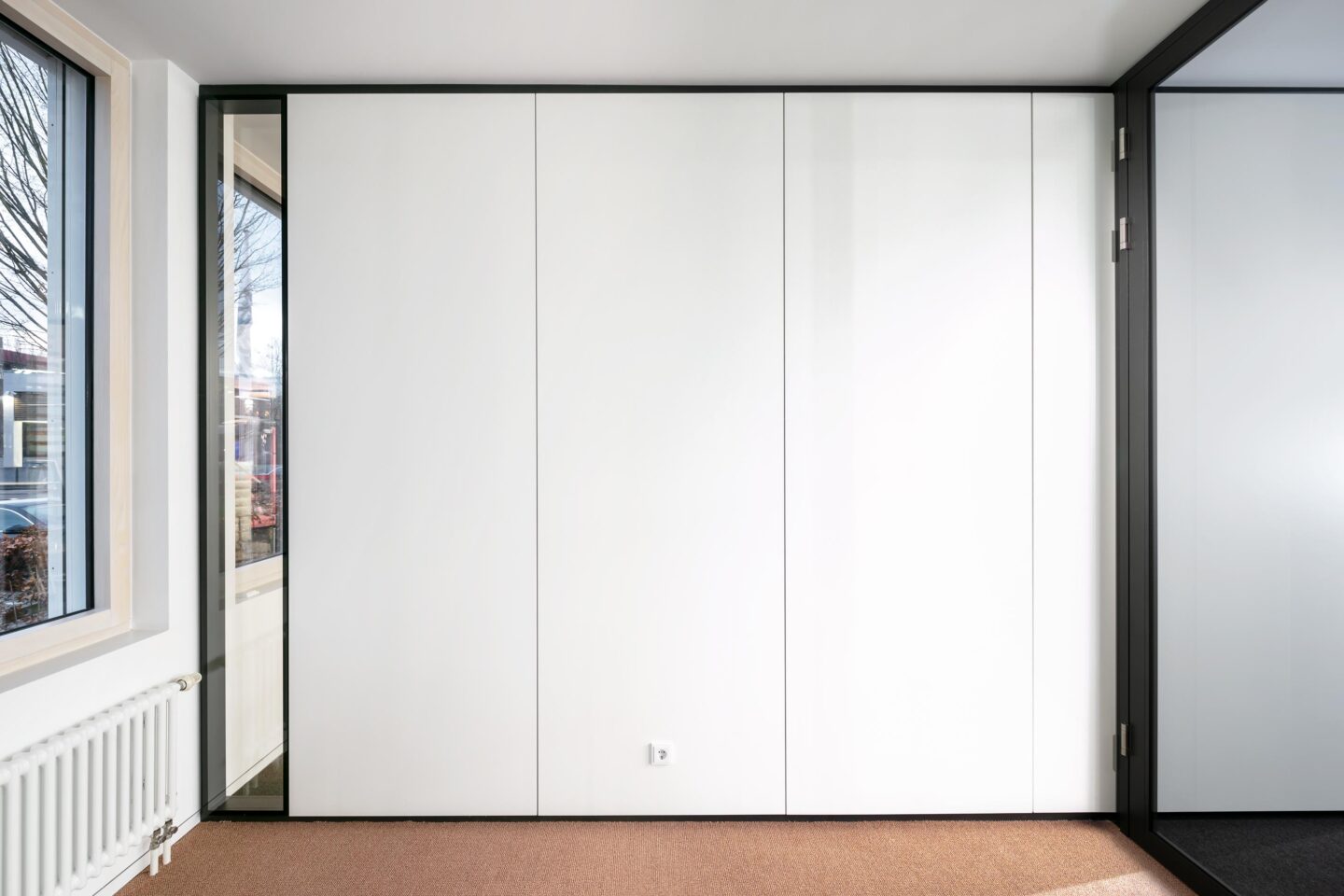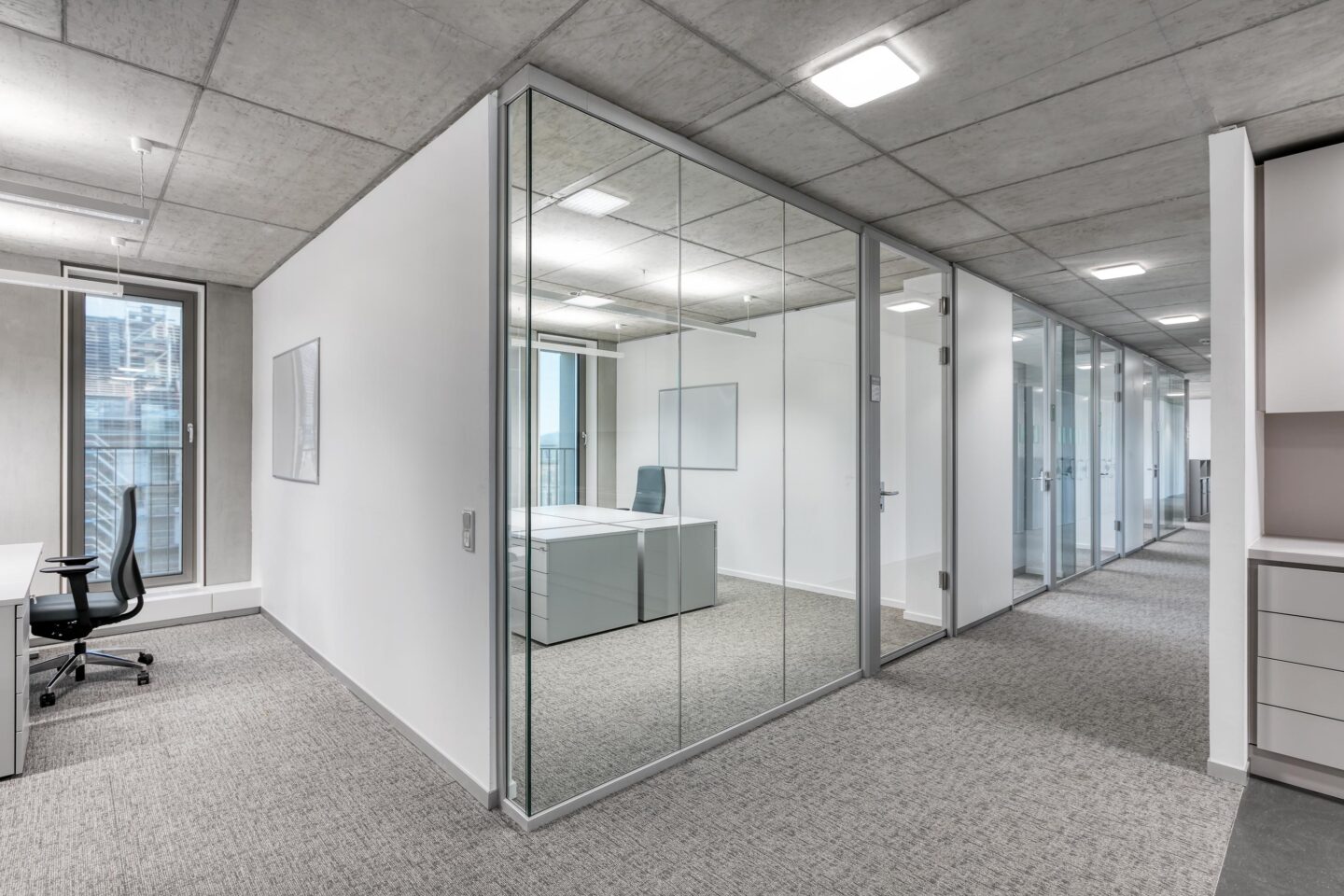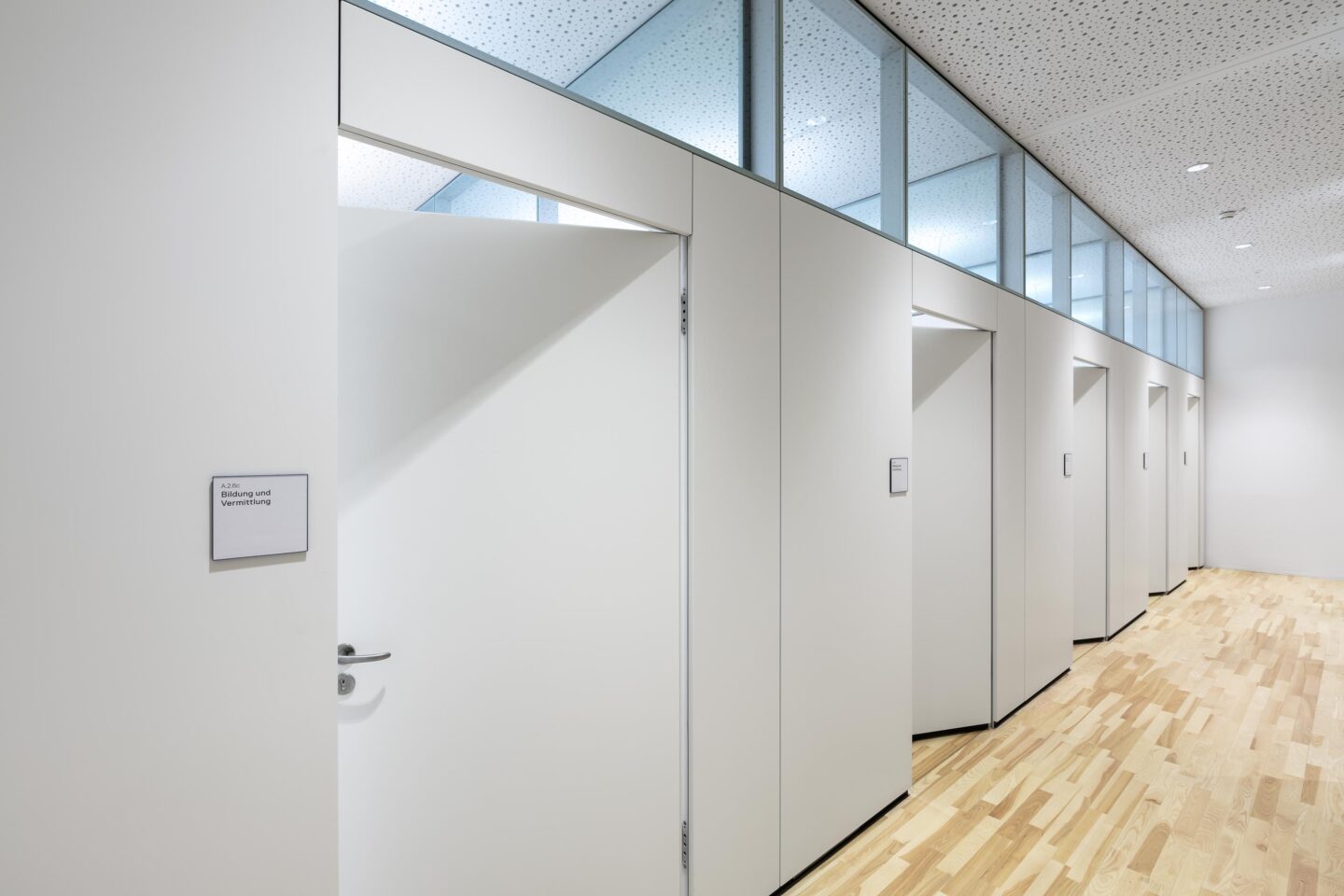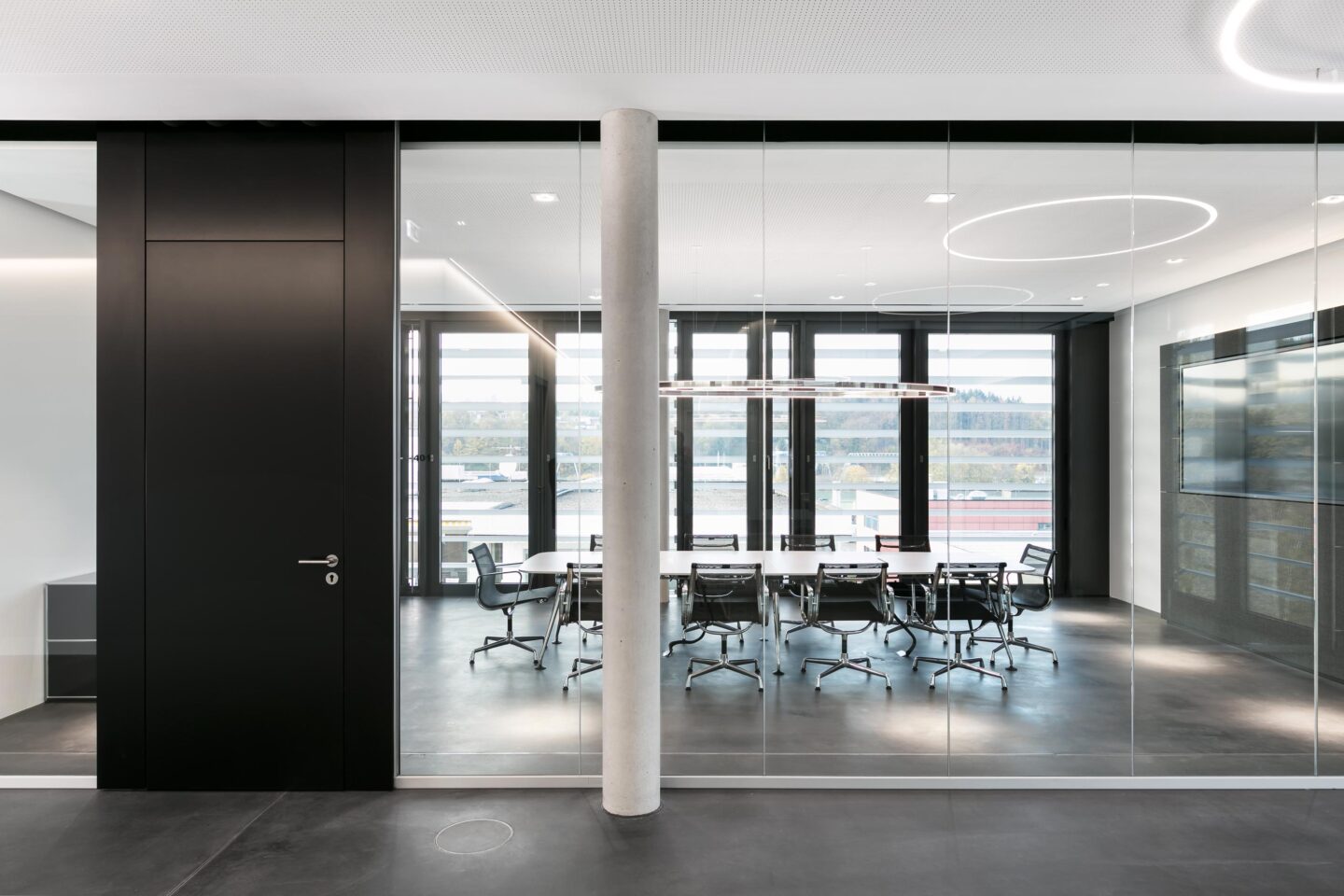Planning system walls
When using system partition walls, the individually correct element configuration is decisive for flexibility in use and long-term economic efficiency.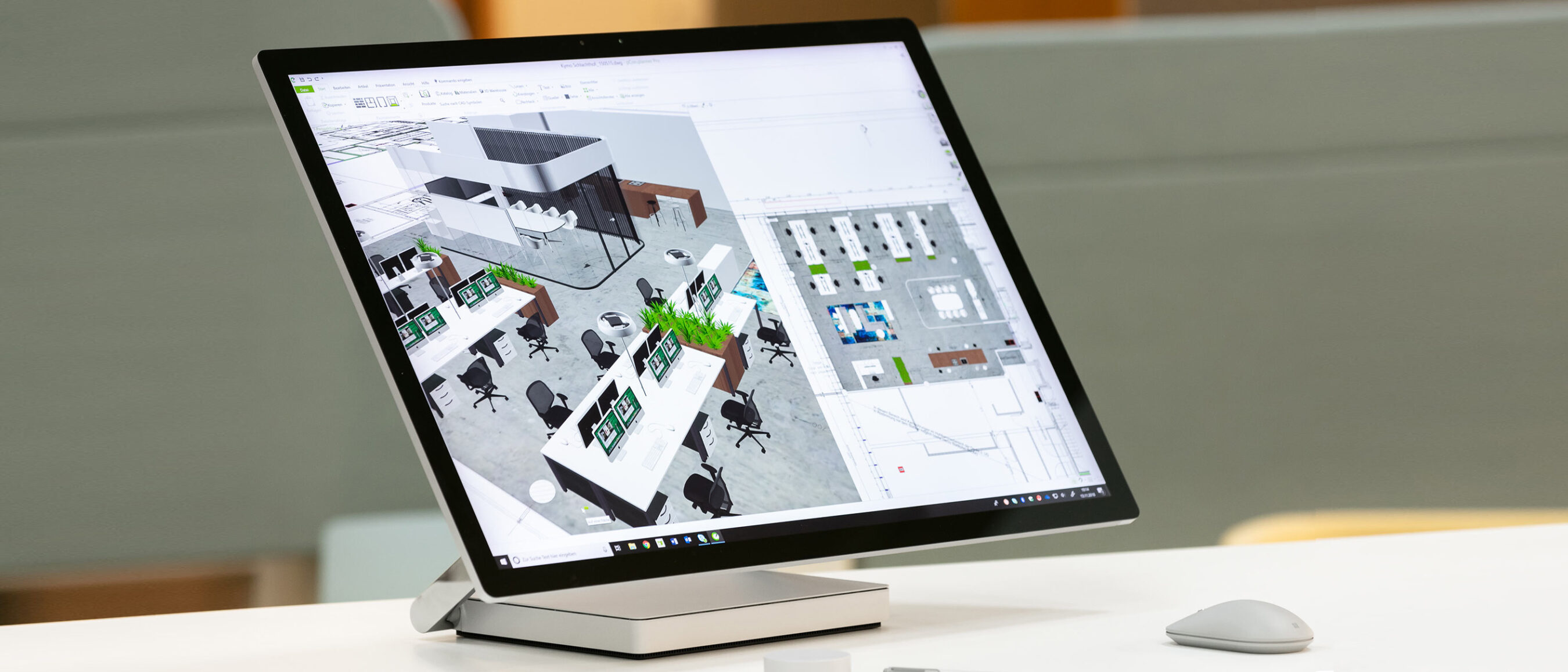
Wall element sizes should be determined on the basis of the on-site possibilities for inserting and transporting them, including with regard to subsequent room changes.
Uniform architecture through the adoption of the facade grid
Office and administrative buildings are usually constructed on the basis of a specific building grid, which is reflected in a facade and extension grid. For example, the frequently encountered column grid of 5,400 mm results in a facade and extension grid of 1,350 mm.
The transfer of the facade grid to the corridor partition wall creates a uniform architecture and enables office partition walls to be connected in any facade axis without requiring conversion of the corridor partition wall.
Economy due to uniform grid dimensions
On the one hand, the division of walls into grid dimensions that are as uniform as possible creates a certain serial effect during production, which is reflected in a competitive price. On the other, the large number of identical elements ensures greater flexibility in the event of possible later conversion.
How we plan your system wall elements to be as economical as possible:
Solid wall elements
Solid wall elements are the most economical due to optimal use of the wood-composite panels in an element width of W = 1000 mm. They can be realised undivided up to a height of H = 3000 mm. Element division with a narrow system joint is more suited for all other dimensions.
Glass elements
Undivided glass elements can generally have an element width of up to W = 1350 mm and an element height of H = 3000 mm – unless high noise and fire protection requirements apply. feco offers attractive solutions for all glazing systems with tapered connection profiles to connect an office partition wall to a glazed corridor partition wall in the axis joint.
Door elements
For door elements, different element widths result depending on the door leaf thickness in order to ensure a clear passage of at least 90 cm with the door leaf open at 90°. The standard height of the door elements is H = 2,115 mm (top edge of the frame). A closed solid-wall upper panel is placed above it or fanlight glazing can be installed. Depending on the installation situation, the fanlight glazing can also extend across the solid wall door panel and thus support the entire axial width. Alternatively, doors with a height of up to H = 3000 mm with floor-to-ceiling undivided door frames are possible.
Door side parts
A glass door panel with a width/height ratio of at least 1:10 creates additional transparency. A solid-wall door panel provides space as a technology panel for the installation of light switches, sockets, and room signage. Division into two half-width panels also enables the connection of an office partition wall if the door is placed next to the wall, e.g. in a biaxial office. Optional integration of a fecoair air overflow element in a solid-wall door side panel is possible.
More topics and knowledge
We are at your service.

We are at your service.
Visit us in the feco-forum with over 3,500 m² of display area.
Arrange a consultation